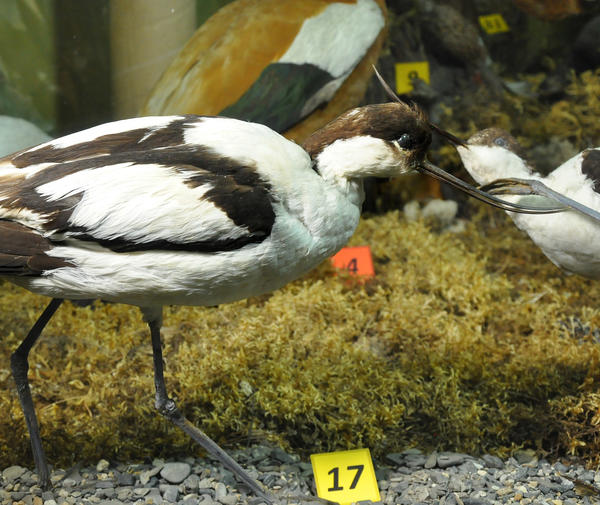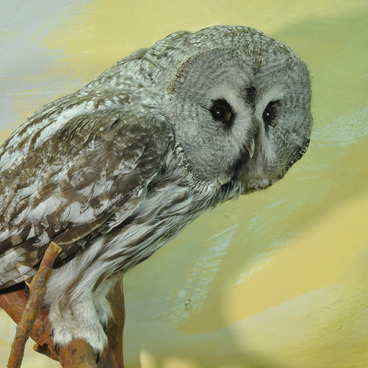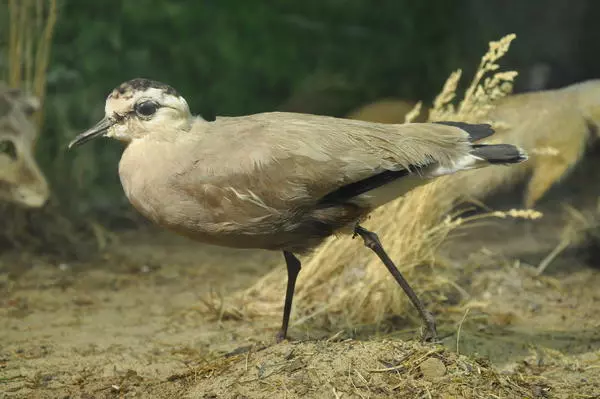Avocet is classified into Charadriiformes order. Its Latin name is Recurvirostra avosetta. It is a beautiful wader, the size of a pigeon, boasting a long, flat, upward hooked beak. The bird has contrasting, black-and-white, coloration. The legs are tall, bluish-gray in color with the webbed front toes. Avocets are excellent flyers and good swimmers.
The avocets’ habitat includes Eurasia and Africa, in Russia they can be most frequently seen in Northern Caucasus, Caspian Lowland and South Siberia. The birds like to settle by the lakes, both salt and silt, featuring alkaline marches and muds. Their nesting colonies consist of up to several dozen couples.
The avocet’s sharp needle-like beak is critical for hunting. The bird uses it to catch various kinds of small water game rapidly and efficiently. The bird feeds ‘blindly’ – it swipes the beak left and right screening the sand and silt for small crustaceans and maggots.
Long legs are also crucial – the birds have to walk several kilometers every day in the search of food. In the shallow waters, the avocet walks at a very slow pace, hardly even moving one leg ahead of another. Her steps are very short – about 12 centimeters but out the water she moves much faster. There are too many predators on a solid land to loiter around.
The bird’s back toe is short and leaves no imprints on a silty bottom. Such imprints can hardly be mistaken for some other bird’s imprints, they are easier to spot on a silty bottom rather than on shore.
The birds nest is a small hole in the sand or low grass. They use a very thin padding made of down, moss or other vegetation. Female lay 3-5 ocher-colored eggs with little black dots. This is not impossible to find the eggs of two females in the same nest. The eggs are hatched by both parents. They attack approaching predators with loud cries, and, in protecting their offspring, can challenge even humans.
The avocet hatchlings are covered with yellowish fuzz; they abandon the nest almost immediately and are capable of following their parents for several kilometers. While they are too small both parents feed them, but in a month-plus time, they start flying and become independent.
The avocets’ habitat includes Eurasia and Africa, in Russia they can be most frequently seen in Northern Caucasus, Caspian Lowland and South Siberia. The birds like to settle by the lakes, both salt and silt, featuring alkaline marches and muds. Their nesting colonies consist of up to several dozen couples.
The avocet’s sharp needle-like beak is critical for hunting. The bird uses it to catch various kinds of small water game rapidly and efficiently. The bird feeds ‘blindly’ – it swipes the beak left and right screening the sand and silt for small crustaceans and maggots.
Long legs are also crucial – the birds have to walk several kilometers every day in the search of food. In the shallow waters, the avocet walks at a very slow pace, hardly even moving one leg ahead of another. Her steps are very short – about 12 centimeters but out the water she moves much faster. There are too many predators on a solid land to loiter around.
The bird’s back toe is short and leaves no imprints on a silty bottom. Such imprints can hardly be mistaken for some other bird’s imprints, they are easier to spot on a silty bottom rather than on shore.
The birds nest is a small hole in the sand or low grass. They use a very thin padding made of down, moss or other vegetation. Female lay 3-5 ocher-colored eggs with little black dots. This is not impossible to find the eggs of two females in the same nest. The eggs are hatched by both parents. They attack approaching predators with loud cries, and, in protecting their offspring, can challenge even humans.
The avocet hatchlings are covered with yellowish fuzz; they abandon the nest almost immediately and are capable of following their parents for several kilometers. While they are too small both parents feed them, but in a month-plus time, they start flying and become independent.





